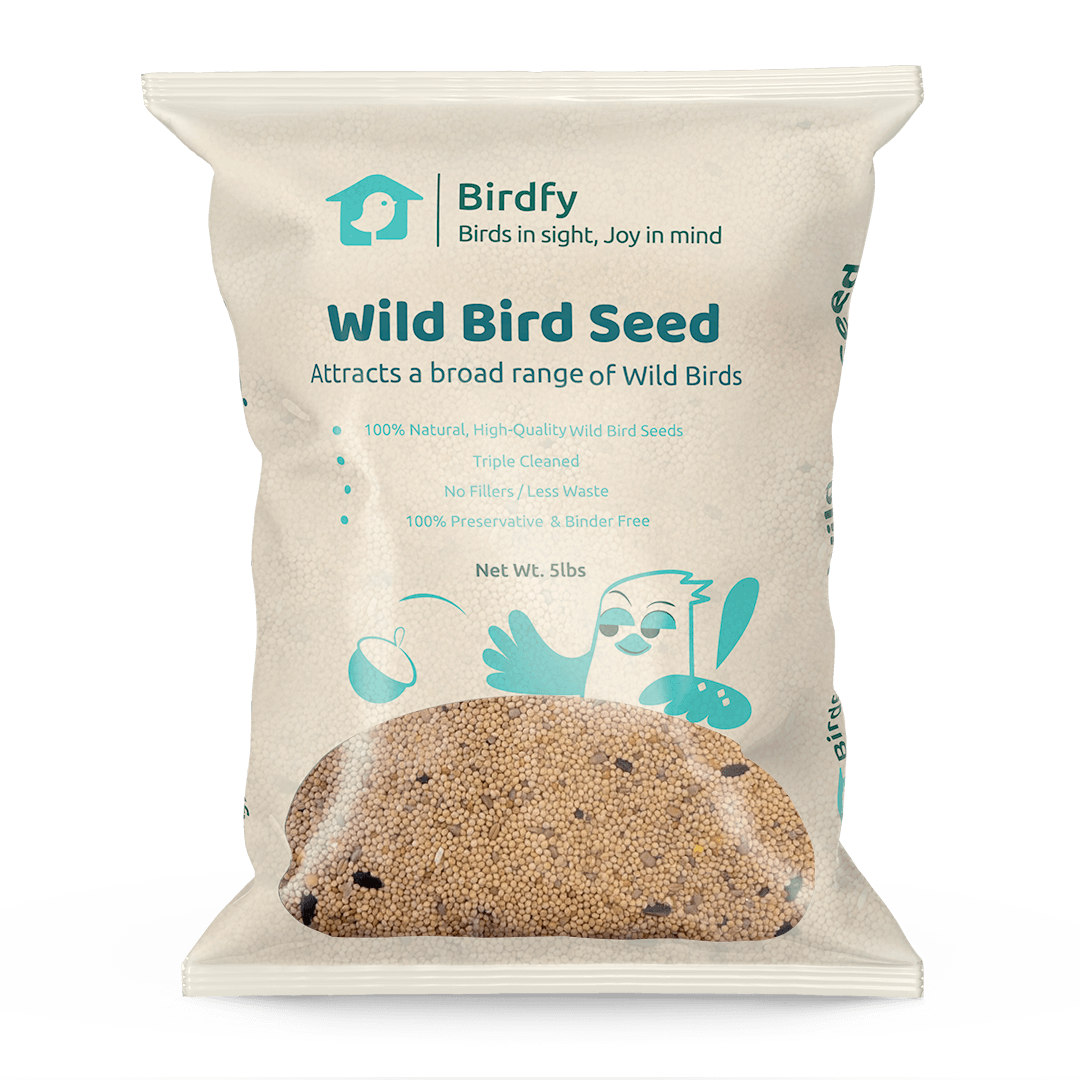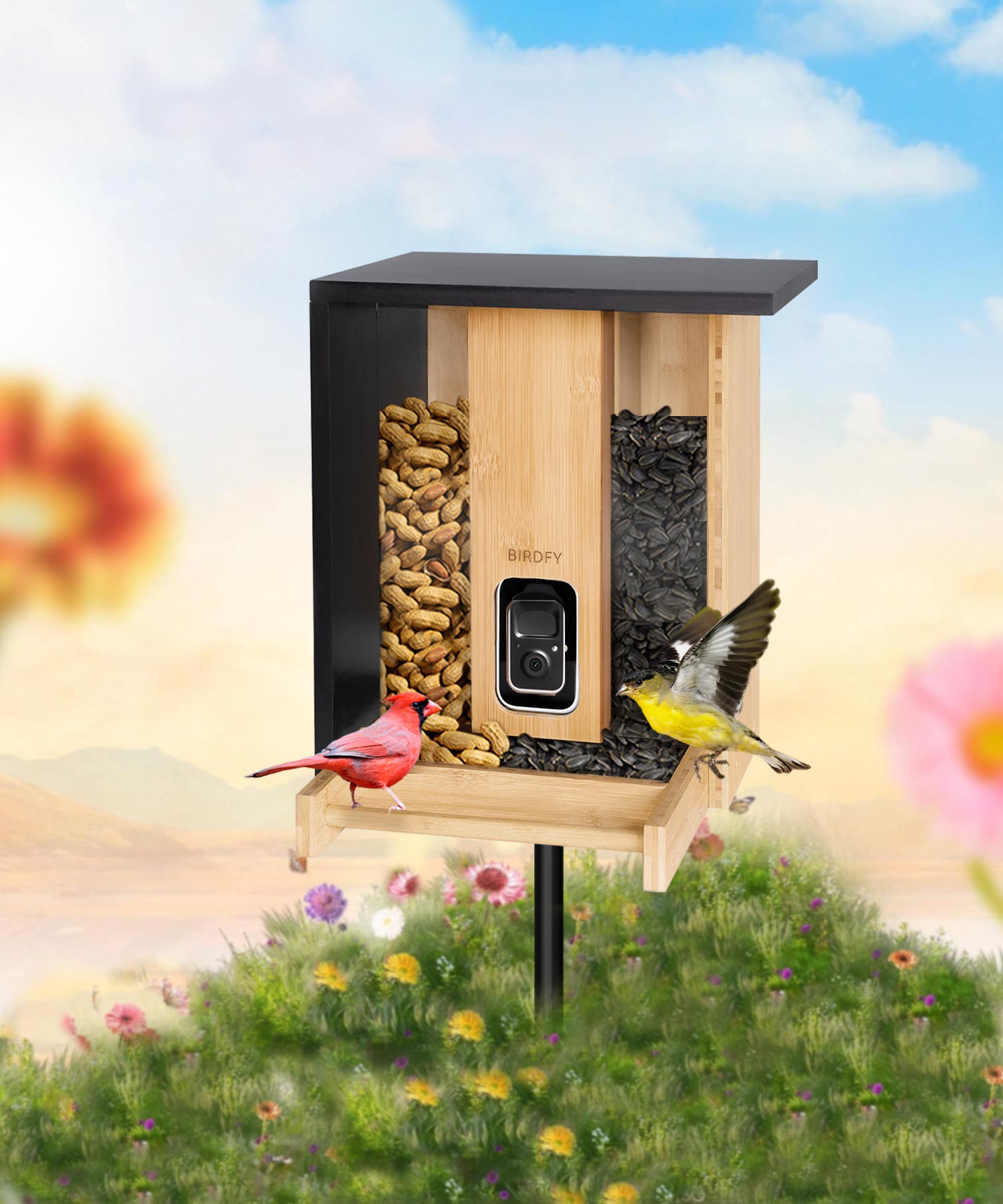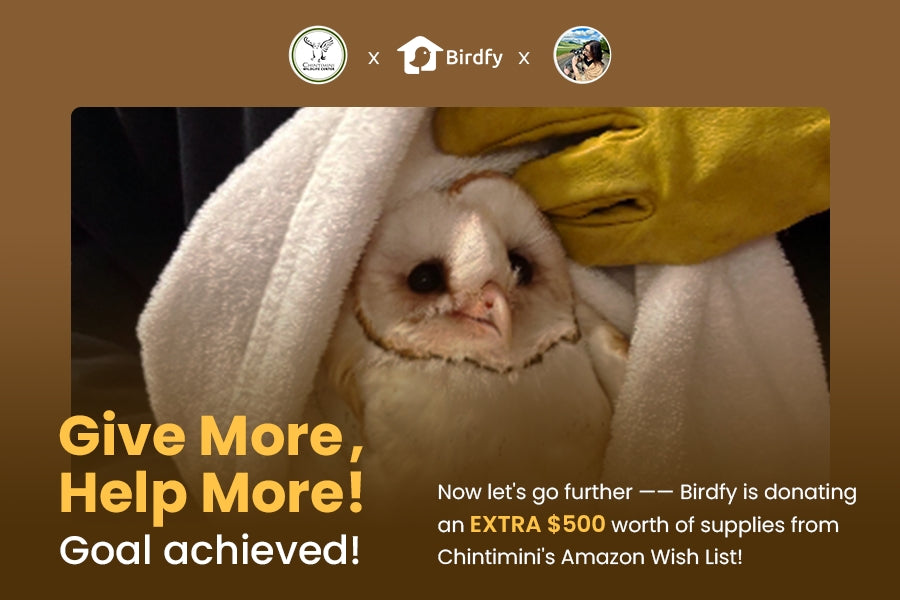In April 2025, Birdfy, a leader in birdwatching and caregiving technology, launched a heartwarming global initiative for bird lovers around the world: Birdfy Live 30-Day Challenge.
Birdfy invited users to transform their backyards into "nature livestream studios" using Birdfy's smart bird feeders, sharing moments with birds daily for 30 days. Over 150 people signed up for the challenge. After a rigorous selection process, we invited 25 outstanding participants to join the 30-day livestream challenge, creating a vibrant mosaic of life in motion.
More than just a global campaign, Birdfy Live was a dialogue between humans and nature. With thoughtful support like Birdfy Feeder 2,start-up fund, gift cards, Birdfy made it easier for participants to embrace the livestreaming journey. These gestures of care sparked enthusiasm and inspired users to capture overlooked moments of beauty, reconnecting with family, neighbors, and distant friends in the process.
Many participants shared how the challenge helped them truly "see" their backyards:
Some identified familiar birds for the first time.
Some rearranged their gardens to better support local wildlife.
Others built new bonds with neighbors and communities through the joy of livestreaming.
Among the many heartfelt stories, the two stood out—Kristi from Pennsylvania and Dayna from Arkansas. Though they lived miles apart, their shared love for nature and Birdfy Live brought them on a journey filled with quiet wonder and deep connection.
A First Step into Livestreaming
Kristi Farinelli lives in a quiet, forested town in northeastern Pennsylvania, where nature is part of everyday life. She first heard about the Birdfy Live 30-Day Challenge in an email from the Birdfy team introducing the new Feeder 2 Pro. Although she had never tried livestreaming before, she quickly signed up—marking the beginning of a new journey to share the daily life of birds in her backyard.
Her channel, "The Pocono Perch," named after the nearby Pocono Mountains, became a cozy corner of nature in her backyard. She livestreamed daily, offered thoughtful feedback, preserved video highlights, and actively engaged with the Birdfy team. After winning a reward from the challenge, she donated the prize to the National Aviary in support of bird conservation.
On the other hand, Dayna Hilton was already part of the Birdfy family, having supported the brand since its early Kickstarter days. A retired firefighter, Dayna had spent over a decade using livestreaming to teach fire safety to children—a mission close to her heart.
Her channel, "Molly's Firehouse," is located in the backyard of Dayna’s home in Clarksville, Arkansas, at the foothills of the Ozark Mountains. Originally a tool shed, she lovingly transformed it into a mini firehouse surrounded by gardens and birds, dedicated to her beloved Dalmatian, Molly. Molly started working with Dayna on fire safety education when she was just nine weeks old. Together, they traveled across the U.S. and Canada and taught children in 34 countries via Skype. Just as they were about to complete their mission of educating all 50 U.S. states, Molly sadly passed away at the end of 2022 after battling illness.
Now, this backyard firehouse—filled with birdsong and blooming plants—stands as a tribute to Molly and a continuation of Dayna's mission to bring light and warmth into others' lives.
Though their beginnings were different, Kristi and Dayna shared the same spirit when going live for the first time: a mix of nervousness, curiosity, and excitement.
It was so exciting when I got the notification from YouTube saying "You are now live!" . It was a busy day at the feeder and I loved that my friends and family were tuning in right away to see the visitors.
——Kristi
Each day I live stream from my Birdfy feeder 2, it feels like it did throughout the years when I live-streamed fire safety programming for children with my Dalmatians, Tango, Siren, Molly, and Boden. No matter how often you live stream, it is always exciting!
——Dayna
Everyday Lives Through the Lens
Each morning, Kristi launched her livestream using Birdfy Feeder 2 and Birdfy Bird Bath to showcase the natural rhythm of her backyard. Birds, squirrels, and the occasional deer would appear on camera, creating a living documentary filled with spontaneity and charm.
Dayna used three Birdfy devices—Feeder 2, Birdfy Hum Feeder, and Birdfy Nest Polygon—to capture hummingbirds, bluebirds, and the broader ecosystem of her bird garden. For her, every new sighting was a thrill: "All moments are exciting!"
Viewers also found peace in these streams.
Many people have shared that the live streams from my yard are relaxing, entertaining, and educational, and they seem to enjoy them.
—Dayna
From One to Many
For Kristi, the challenge started as a personal experience. But as the days passed, it blossomed into a new form of connection. Neighbors became curious about her livestream setup, and friends began tuning in regularly. Her shared clips on Facebook and YouTube drew engagement, turning casual viewership into real community bonds.
It was also a great conversation point for my close friends, family, and neighbors. Plus, I made new birding friends with the other livestream challenge participants!
—Kristi
Dayna, already a central figure in the Birdfy community, continued to foster connection through Facebook groups, answering questions and sharing livestream tips with enthusiasm. "Molly's Firehouse" became more than a channel—it became a beacon for people to gather, observe, and connect over a shared love for animals and nature.
Beyond Livestreaming: A Shift in Perspective
Kristi found herself paying closer attention to the subtle details of her backyard ecosystem. Identifying regular bird visitors led her to consider their needs in her gardening plans, gradually turning her yard into a haven for wildlife.
For Dayna, Birdfy became part of her everyday rhythm. Engaging with nature, chatting with viewers, and connecting with her online community gave her purpose and joy.
Through Birdfy, both users moved from being passive observers to active caretakers, transforming private outdoor spaces into shared sanctuaries.
Birdfy Live: A New Way of Living and Connecting
To many users, Birdfy Smart Feeders have become more than tools—they are windows into nature, catalysts for rediscovery, and bridges for sharing quiet, meaningful moments.
Instead of watching the day's news, my husband and I watch our YouTube channel throughout the day. It’s so relaxing and entertaining.
—Dayna
When the lens turns to nature, we begin to notice what truly matters. These seemingly simple streams have become threads of connection—between people and wildlife, and among communities worldwide. In Kristi and Dayna's journeys, Birdfy Live was more than just a broadcast. It was a quiet revolution in how we see, feel, and relate to the world around us.
As Birdfy continues to evolve, it remains dedicated to listening to its users. With easier installation, richer features, and more immersive livestreaming experiences on the horizon, Birdfy is making birding accessible to all—inviting everyone to embrace their Bird Side of Life.
For any questions or PR enquiries, contact press@birdfy.com, and stay tuned for what Birdfy has in store as it soars to new heights in the years to come.





































